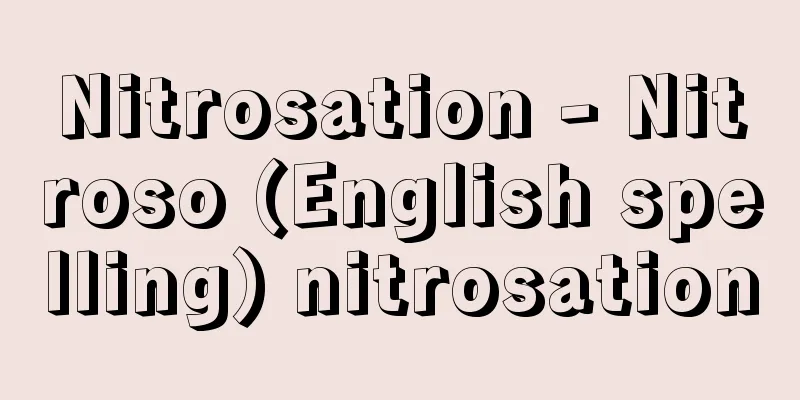Nukina Kaiya - Nukina Kaiya

|
A Confucian scholar, calligrapher, and painter from the late Edo period. Born in Awa (Tokushima Prefecture), he was the second son of Yoshii Naoyuki, who was the archery instructor for the clan elder, Inada Awaji no Kami, and took his real surname, Nukina, at the age of 27. His given name was Shigeru, and his pen name was Kozen or Kimishige. He was commonly known as Masasaburo, and later Shogo or Taijiro, and used many pen names, including Shusui, Kaisen, Kaikyaku, Hayashiya, Kaiya, Kaisou, Suou, and Susou, as well as Tsutsumuou, Ho Chikusanjin, and Suseishujin. He was taught calligraphy by Nishi Nobuyuki (Sokei) of Tokushima, and learned the Kano school of painting from his grandfather Yano Norihiro (?-1799), a painter for the feudal domain. He also climbed Mount Koya with the help of his uncle, and studied the books within the mountain while coming into contact with the writings of Kukai and was influenced by him. After coming down from the mountain, he entered Kaitokudo, run by the Confucian scholar Nakai Chikuzan in Osaka, and became its head. He eventually traveled around the country to study calligraphy and painting, and in Nagasaki he was taught Nanga painting by Hidaka Tetsuo (1791-1872). He traveled along the Tokaido and Nakasendo roads, and stayed in Edo for a time, but later opened the Suseijuku in Kyoto, where he lectured on Confucianism. In his later years, he gained fame primarily as a calligrapher, and was praised as the best in Kyoto. He studied the excellent works of the ancient monumental calligraphy collection and then went one step further to develop his own unique and elegant style, which earned him the nickname "one of the three great calligraphers of the late Edo period" along with Ichikawa Beian and Maki Ryoko, and he was highly acclaimed in the calligraphy world of the Meiji period. [Shigeru Matsubara June 20, 2016] [References] | | | | |Source: Shogakukan Encyclopedia Nipponica About Encyclopedia Nipponica Information | Legend |
|
江戸末期の儒者、書家、画家。阿波(あわ)(徳島県)の人。藩の家老、稲田淡路守(あわじのかみ)の弓術指南であった吉井直幸の二男として生まれ、27歳のとき本姓である貫名氏を名のる。名は苞(しげる)、字(あざな)は子善または君茂。通称を政三郎、のち省吾あるいは泰次郎といい、拾翠(しゅうすい)、海仙、海客、林屋、海屋、海叟(かいそう)、菘翁(すうおう)、菘叟のほか、摘菘翁、方竹山人、須静主人など多くの号を用いた。徳島の西宣行(双渓)に書の手ほどきを受け、絵は藩の絵師で祖父にあたる矢野典博(やののりひろ)(?―1799)に狩野(かのう)派を学んだ。また、伯父を頼って高野山(こうやさん)に登り、山内の図書を学ぶと同時に、空海の真跡に接してその影響を受け、下山後は、大坂の儒者、中井竹山の懐徳堂に入り、その塾頭となった。やがて書画研究のため諸国を遊歴し、ことに長崎では日高鉄翁(1791―1872)から南画を教授され、東海道、中山道を経て、一時江戸にもとどまったが、のち京都に須静塾を開いて儒学を講じた。晩年は、もっぱら書家としての名声を博して京都第一とうたわれた。古碑法帖(ほうじょう)の優品を学んでそこから一歩ぬきんでた品格の高い独自の書風は、市河米庵(いちかわべいあん)、巻菱湖(まきりょうこ)とともに「幕末の三筆」と称され、明治の書壇でも高い評価を受けた。 [松原 茂 2016年6月20日] [参照項目] | | | | |出典 小学館 日本大百科全書(ニッポニカ)日本大百科全書(ニッポニカ)について 情報 | 凡例 |
<<: Nukualofa - Nukualofa (English spelling)
>>: Sampling inspection - Sampling inspection
Recommend
Family: Angelfish
...Until recently, the scientific name of this sp...
Ibel, HG - Ibel
...The group's name, derived from the Hebrew ...
enlargement
...the positive image obtained by this type of co...
Abd al-Hamid al-Khatib - Abd al-Hamid al-Khatib
…In prose, speeches developed, while tawqi'āt...
Linden - Shinanoki
A deciduous tall tree of the family Tilia (APG cl...
Tamamo - Tamamo
It is an old name for seaweed that grows in water...
Philo Judaeus (English spelling)
…a famous philosopher of Jewish and Greek traditi...
Mathura Art - Mathura Art
Art that flourished during the Kushan and Gupta pe...
Macrocystis
...Although not found in Japan, seagrass-related ...
Jufukuji Temple
This temple is located in Ogigayatsu, Kamakura, K...
scythe
…European bronze sickles (cast) inherited this sh...
Antrum mastoideum (English spelling) antrum mastoideum
…Normally it is closed, but when yawning or swall...
Akis
In Greek mythology, she was a sea nymph and one o...
Hot spring discharge - Onsen yuushutsuryo
…Kusatsu with 34,240 l/min, Beppu with 22,200 l/m...
Canis lupus arabs (English spelling)
…[Tokuji Chiba]. … *Some of the terminology that ...









